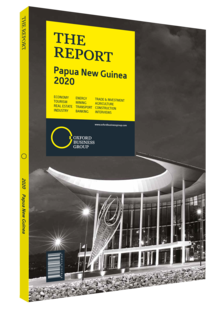How Papua New Guinea’s extractive sector is navigating Covid-19
The outbreak of Covid-19 in the first half of 2020 took an economic toll on countries around the world, with each experiencing the effects slightly differently. In Papua New Guinea the pandemic placed the country’s foreign exchange (forex) reserves under renewed pressure; PNG’s forex flows are primarily linked to commodity markets, many of which entered negative territory when the pandemic took hold.
In 2019 extractive industries were responsible for approximately 94% of the country’s exports, mostly stemming from liquefied natural gas (LNG) and gold. However, while global energy markets tumbled when factories shuttered and the majority of travel ground to a halt due to the Covid-19 pandemic, gold was one of the few global commodities to maintain its value since the start of the pandemic.
Forex Needs
The issue of forex reserve levels dates back to 2014, when the country’s central bank, Bank of Papua New Guinea (BPNG), imposed a trading band for the kina. This was an effort to prevent further slides in value caused by the completion of the construction phase of the $19bn PNG LNG project, alongside a slump in commodity prices. Forex shortages were later further compounded by the need for PNG LNG project partners to begin paying back loans used for the development phase. However, the situation seemed to be improving before the Covid-19 outbreak, thanks to the combination of a maiden $500bn sovereign bond issuance in 2018, concessional loans from development banks and bilateral partners, improved performance in extractive exports, and targeted interventions by the central bank.
Speaking to local media in mid-April 2020, Loi Bakani, the governor of BPNG, said the country had around PGK6.9bn ($2bn) in forex reserves, equivalent to 9.3 months of non-mining import cover and 5.4 months of total import cover. He added that BPNG would intervene in the forex market to ensure health care institutions and related businesses involved in fighting Covid-19 could meet their import needs. Some analysts believe the country may need to broaden its options for maintaining forex supplies if the downturn persists over a prolonged period.
“Through various state-owned enterprises, PNG has built up large forex balances that are held overseas,” Deepak Gupta, executive general manager of business partners and wealth at Kina Bank, told OBG. “It would be worthwhile to consider bringing them back onshore as part of the forex toolkit, to be used should conditions worsen or extend for a longer period.”
Golden Lining
Gold has long been seen as a safe option for investors looking to hedge against uncertainty in equity and currency markets, thus there is some hope that PNG’s plentiful gold mining reserves could partly offset declines in other commodity exports. PNG is the world’s 14th-largest gold producer, and the precious metal accounted for almost 77% of the mining sector’s export revenue in the first half of 2019. Major active mines include Lihir, OK Tedi and Porgera. While the price of copper, PNG’s second-most-valuable mining export product, fell significantly in December 2019, gold prices steadily rose above $1700 per oz in the first quarter of 2020. In April 2020 Bank of America projected the price could go as high as $3000 per oz by the end of 2021.
Mining companies have maintained operations in PNG despite the Covid-19 disruption in the first quarter of 2020, with the implementation of new hygiene and social-distancing measures as well as the preparation of medical response facilities. Mining industry leaders have remained hopeful that the increases in gold revenue will be able to offset declines in copper through 2020. “Assuming Covid-19 does not cause production to be shut down, I expect that forex inflows from mining should not change significantly in 2020, given the balance of PNG’s gold and copper production,” Peter Graham, chairman and acting managing director of Kumul Minerals Holdings, told OBG.
You have reached the limit of premium articles you can view for free.
Choose from the options below to purchase print or digital editions of our Reports. You can also purchase a website subscription giving you unlimited access to all of our Reports online for 12 months.
If you have already purchased this Report or have a website subscription, please login to continue.

